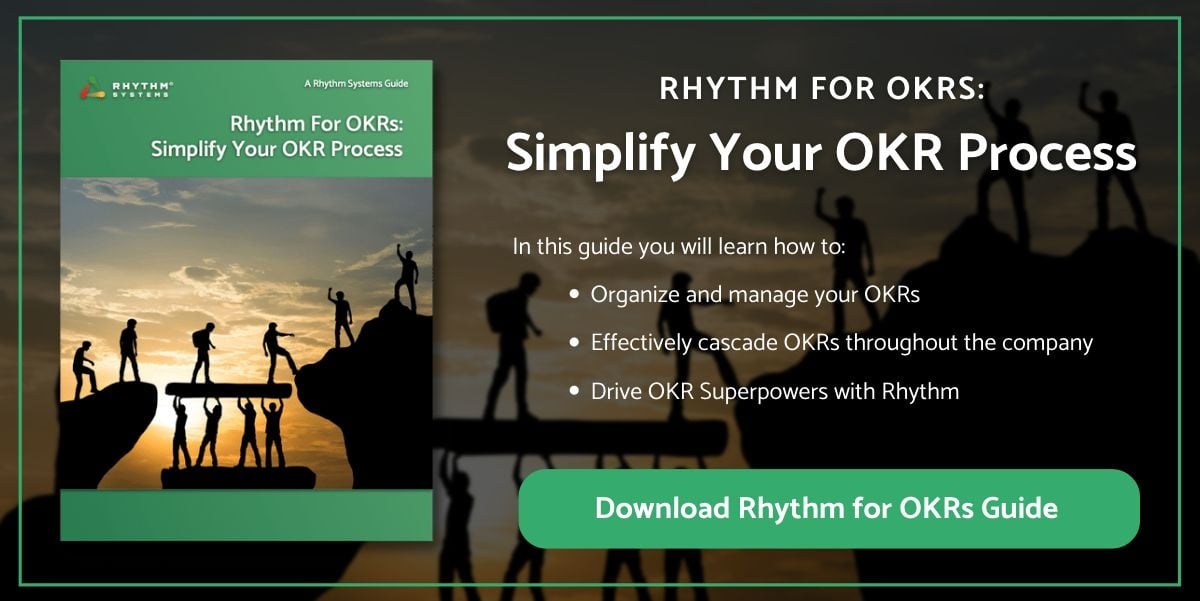Are you feeling overwhelmed by how your team is measuring success? Are you looking for an easy-to-understand way to set targets and understand progress?
Don't worry - Objectives & Key Results (OKRs) are here to save the day. OKRs are a process used by many leading companies to measure progress across departments and divisions, track the big picture, and help teams stay aligned with their overall objectives.
I will provide an expert guide on writing and applying OKRs in your business in this article. I will also share examples from top business leaders who have successfully implemented them in their organizations.
Align your goals with your company's goals
Aligning your goals with your company's goals is an essential part of successful OKR writing. When writing objectives and key results, you should ensure they align with the company's mission and values. This helps you stay on target, connects each team's OKRs to the grand vision of the organization, and empowers employee engagement.
Creating cross-departmental OKRs further highlights this importance. By collaborating on these OKRs, teams can move forward as a single unit toward achieving their shared objectives and key results. This also allows departments to see how their goals align with each other, which can be very valuable when tackling bigger projects to avoid duplicate work and catch problems before they become too large.

Create a Clear Objective For Your OKR
Having a single goal that captures everyone's attention allows focus on achieving success in one direction instead of having multiple dispersed goals requiring different approaches or strategies. It prevents re-work due to lack of communication among teams and makes maximum goal attainment achievable with fewer resources. Therefore, creating a clear objective is essential for organizations seeking maximum goal attainment and business results.
To effectively communicate across departments, it's essential to ensure that everyone understands the interdependencies between their efforts and those of other departments or teams. This understanding can only be achieved if the objective is crystal clear.
Define Measurable Key Results
If you want to write successful OKRs, a key step is defining measurable key results. These key results can quantify progress toward achieving your OKR goals in a tangible way. This means you must ensure that they are numerically measurable, using numeric targets, dated milestones, or other concrete metrics. The OKR framework is flexible enough for you to write key results in a way that makes sense to your organization.
For example, if you have an OKR goal of launching a new product this year, a measurable key result could be gaining 100,000 active monthly users by the end of the year.
Whatever you set out to do with your OKRs, clearly outlined and measurable key results will help you track your progress and make sure that everyone involved understands what needs to be done for the bigger-picture goal to be achieved.

Plan Your Key Initiatives and Rocks
When writing OKRs, one of the most important processes is planning your key initiatives and Quarterly Rocks. Before you start prioritizing tasks for yourself and your team, it's best to consider what those tasks will encompass and what key things need to get done. You'll need to establish a timeline with action items and assign people responsible for executing them.
In addition, it's crucial that you create well-defined objectives that are measurable and achievable in the given timeframe. This could include tasks such as increasing customer satisfaction or upscaling a product’s sales performance by 10%. Ensure each Rock is tangible by setting concrete goals to which everyone can refer back when assessing progress against the objectives.
Once all of your goals have been identified and outlined, plot a timeline that outlines the issues and prioritizes each according to importance. This should detail who is doing what, when they must be completed by, and who has primary responsibility for their successful completion. A clear plan will help ensure realistic expectations and success can easily be measured!
Ensure Transparency and Cross-Department Collaboration
Ensuring transparency across the organization is critical when it comes to writing OKRs. All employees must be on the same page, from executive team members and team leaders to front-line employees. Every individual needs to understand how their job contributes towards achieving the overall organizational goal and how their success is measured; see our OKRs for business development examples.
To accomplish this, communication and collaboration are essential. Regular meetings, discussions, and progress reviews should be held throughout the process to ensure everyone's efforts move harmoniously. Leaders should also regularly provide feedback so that everyone feels they have ownership of their work and can make meaningful contributions. By having an open dialogue, teams will become more productive and more engaged in their organizational role. Ultimately, this will result in better results for the entire organization.
The Rhythm of Work is a strategic framework that helps organizations create an effective and efficient workflow. It involves setting up regular meetings, discussions, and progress reviews to ensure everyone is on the same page, from executive team members to front-line employees. Additionally, it's important to choose the right software and people tools to help facilitate communication and collaboration across the organization. Finally, it's essential to avoid common mistakes.
OKR Pitfalls to Avoid
Not setting measurable objectives: Make sure each Rock is tangible by setting concrete goals that everyone can refer back to when assessing progress against the objectives.
Not having a clear timeline: Plot out a timeline that outlines the issues and prioritize each one according to importance. This should detail who is doing what, when they must be completed by, and who has primary responsibility for their successful completion.
Not ensuring transparency across the organization: Ensure all employees are on the same page, from executive team members and team leaders to front-line employees. Regular meetings, discussions, and progress reviews should be held throughout the process to ensure everyone's efforts are moving harmoniously.
Not using the right software and people tools: Choose the right software and people tools to help facilitate communication and collaboration across the organization.
Not providing regular feedback: Leaders should also provide feedback regularly so that everyone feels like they have ownership of their work and can make meaningful contributions.

OKRs, when implemented correctly, work. You can use our software or any part of the complete Rhythm system to get you started where you feel most comfortable. Just drop us a line, and let’s see how we can help.
Looking for some additional OKR examples to help get you started?
- OKR vs KPI: What’s the Difference Between OKRs and KPIs and Why You Need Both?
- OKR Spreadsheets: Why You Should Upgrade Your OKR Software Game
- OKR vs KPI vs MBO: What the Best Goal Types Have in Common
- Using OKRs for Your Weekly Team Meeting
- OKR Video: How to Get Started with OKRs and the Best OKR Software
- OKR Examples for Manufacturing: Measure What Matters for the Quarter
- Using Red Yellow Green Performance Indicators Examples That Are SMART
- SMART Goal Setting Theory: To Create SMART Goals, Start With “Why”





